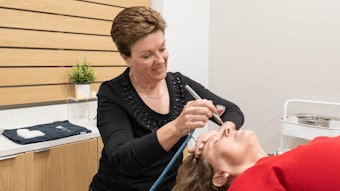
Technology innovation is leading to more choice, control and customization in every aspect of our lives. The spa industry is notoriously late to the party when it comes to leveraging technology, but now is the time for revolutionary thinking that benefits all members of the spa value chain: properties, team members and guests. Technology innovations will enable smarter, more streamlined operations and enhanced wellness experiences.
Log in to view the full article
Technology innovation is leading to more choice, control and customization in every aspect of our lives. The spa industry is notoriously late to the party when it comes to leveraging technology, but now is the time for revolutionary thinking that benefits all members of the spa value chain: properties, team members and guests. Technology innovations will enable smarter, more streamlined operations and enhanced wellness experiences.
Spa operators traditionally rely on spa management software for staff scheduling, reservations, POS, inventory and reporting. The industry’s challenge today is obtaining and retaining high quality therapists, so the tech of the future must act as a business partner, alleviating laborious inputs and empowering the spa operator to expand and build their business. This will enable them to easily attract the highest quality therapists and drive personalized guest experiences.
Control, Choice and Customization
The definition of control is the power or authority to guide and manage. Technology empowers spa operators to better control costs, reservations, scheduling, inventory and automation of recurring administrative functions. By harnessing the right features, spa directors, therapists and front desk team members are empowered to be experience-makers rather than administrative workers.
Choice is about expanding the range of possibilities for both providers and guests. In spa operations, it is also the ability to manage and measure in exciting new ways.
Next-generation software allows spa operators to choose price and treatment duration based on demand levels. The ability to manage demand by driving consumers to the more profitable elements of your menu drives higher revenues and profits.
For today’s spa-goer, the ability to book what they want, when they want is a must-have. Matching software allows ultimate choice.
Meanwhile, demand for spa treatments has expanded to demand for wellness immersion experiences, and spas are now viewed as a crucial lifestyle resource. The “Experience Economy” has given way to the “Transformation Economy,” where experiences are elevated from mere enjoyment to actual personal transformation. As people adopt self-care and well-being practices as a coping strategy for the new normal, static spa menus are being replaced with a choice of duration and complete customization based on the guest’s needs and the therapist’s expertise.
Effective use of technology is critical as the delivery of customization becomes more granular. Spas are leveraging software-as-a-service (SaaS) apps to extend the relationship beyond the four walls of the spa. In addition to offering treatment customization options, we need to be asking: What value can we add to that guest’s life outside of the spa treatment, and how do we continue a conversation after the guest goes home?
The Future of Spa Tech
Transformational experiences around health and wellness are the future of spa. The relationship will evolve into something like this: “I see you are coming to the spa because you are trying to change something in your life. We can be part of that journey, today and going forward.”
Digitalization is the only effective way to deliver this level of personalization, and there are three trends driving the future of spa software.
Tech-enabled wellness memberships: Technology will allow spas to adopt a club model offering monthly memberships that extend the wellness experience. Spas can communicate and deepen relationships between visits by offering mindfulness tips and recommending products and services. Partnerships with complementary wellness apps will allow a wide range of tools and resources.
Hyper personalization using AI: AI machine learning performs tasks that normally require human intelligence, such as visual perception, speech recognition, decision-making and translation between languages. Future AI technologies will give spas the ability to personalize treatments specifically for a guest based on goals and preferences. If I am searching for a service and someone with a similar profile has rated therapist, location, treatment and products in a certain way, then the system would be able to predict what I will enjoy the most.
Smart spa environments: Smart environments are the ultimate in terms of personalization. These “wired” environments will combine sensors, personal devices, wearables and voice technologies. Devices will talk to each other and get smarter over time—predicting the guest’s every want and need.
Picture this smart spa experience: Guests check-in and out through their smart devices, having pre-selected their therapist and treatment. After changing into spa wear, they enter their relaxation pod, select their preferences and listen to a welcome message that confirms their journey, conducts skin scanning and provides guided meditation featuring light, sound and aromatherapy. Post-treatment follow-up on the app recommends a home-care regimen, mindfulness program and other products that can be delivered right to their door.
Technology can provide seamless integration of spa operations while enabling the delivery of transformational, ultra-personalized experiences that continue long after the guest leaves the spa. Messaging to team members and guests will become even more personalized to a granular level, especially in the luxury segment. Digitalization is the only way to deliver this level of personalization.
Technology will also play a crucial role in solving the staffing dilemma. We need to attract young people to careers in the spa industry and deploy technology that will give them the freedom to invest in themselves and their guests. This high tech will ultimately enable high touch.
_________________
Ilana Alberico is the founder and president of SpaSpace software. Her 21-year career in spa and wellness spans from the treatment room as a massage therapist to CEO of ISM Spa Management, to the leader of a booming tech start-up.










